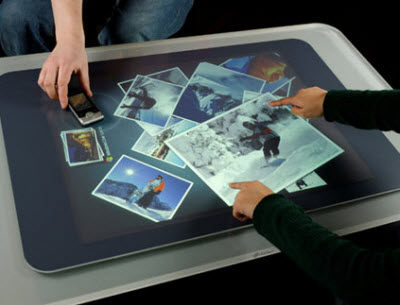
The display uses technical feedback technologies to make you feel the ridges, bumps and textures of a displayed image, like the one pictured, according to New Scientist. The idea is aimed at large table-sized computing displays such as Microsoft’s Surface technology, according to the patent application.
[aditude-amp id="flyingcarpet" targeting='{"env":"staging","page_type":"article","post_id":229427,"post_type":"story","post_chan":"none","tags":null,"ai":false,"category":"none","all_categories":"business,","session":"A"}']The Microsoft screen can reportedly produce a real texture, using pixel-sized memory plastic cells that can be ordered to protrude from the surface of the display upon demand.
Others working on this kind of technology include Nokia, Disney’s research arm in Pittsburgh, Penn., and Finnish firm Senseg. Those companies are working on “vibrotactile displays,” which use voltages of different frequencies, applied to a grid underneath the touchscreen, to trick your fingers into feeling a variety of touch sensations. The problem with those screens is that they can emit an audible buzz, New Scientist said.
AI Weekly
The must-read newsletter for AI and Big Data industry written by Khari Johnson, Kyle Wiggers, and Seth Colaner.
Included with VentureBeat Insider and VentureBeat VIP memberships.
Microsoft’s patent, published on Sunday, shows that the company uses a layer of shape-memory plastic placed above a large touchscreen. It distorts the surface when different wavelengths of ultraviolet light strike its pixels from beneath. The inventor is Erez Kikin-Gil. A projector within a Surface display can project an image onto a tabletop from below. As the user touches the images, the infrared technology detects the movements and triggers changes in the plastic sitting atop the display.
Well, it doesn’t take a rocket scientist to figure out that the porn industry will be looking forward to these kinds of displays. Seriously, though, the technology could take displays one step closer to presenting illusions so realistic that you can’t tell whether the images in front of you are fake or real.
VentureBeat's mission is to be a digital town square for technical decision-makers to gain knowledge about transformative enterprise technology and transact. Learn More
